Industry Experts Provide 2018 Highlights, 2019 Predictions (Part Two)
In part two of a two-part series this week, experts weigh in on the topics of climate change, marine debris, plastic waste, medical waste, association milestones and 2019 predictions.

In part two of a two-part series this week, industry experts discuss the ongoing concerns around climate change, marine debris and plastic waste, medical waste collection and disposal developments, industry association milestones and predictions for the new year. Read part one here.
2018 brought a lot of challenges and opportunities to the waste and recycling industry. Climate change, marine debris, plastic waste and medical waste were noted as top concerns, but those concerns pushed companies and municipalities around the globe to commit to reducing emissions and the use of plastic, helping with global cleanup efforts and educating customers and community members about effective and efficient waste reduction and recycling practices.
Across the board, industry associations had a positive year of growth and milestones, and the overall industry held steady despite the ongoing headwind of recycling.
In part two of this two-part series, industry experts expand upon their top moments of 2018 and predictions for 2019.
Climate Change, Marine Debris and Plastic Waste Continue to Raise Concerns
Climate change, marine debris and plastic waste continued to top media headlines and conversations across the globe in 2018. Many companies made commitments to use less plastic in their products and others committed to helping with cleanup efforts, most notably the Great Pacific Garbage Patch cleanup that’s now delayed by at least a year.
“Over the past year, policymakers, the media and others have connected the issues of marine litter and climate change to solid waste management to an unprecedented degree,” says David Biderman, CEO and executive director of the Solid Waste Association of North America (SWANA). “The World Bank’s release of its ‘What a Waste 2.0’ report and the International Solid Waste Association World Congress in Malaysia, which focused on these linkages and the need to close dumpsites in developing nations, are the two best examples of those connections. Circulate Capital was spun out of The Closed Loop Fund to focus on marine litter and waste infrastructure in Asia, and many companies are issuing new sustainability and recycling goals. I expect these trends to continue—and accelerate—in 2019 and beyond.”
As more and more consumers and companies express interest in tackling these issues, more and more opportunities arise for them to work together to make a difference.
In America, for instance, curbside recycling and utilizing sanitary landfills are common practices, but in areas like India, China, Brazil and Indonesia, those best practices aren’t so common.
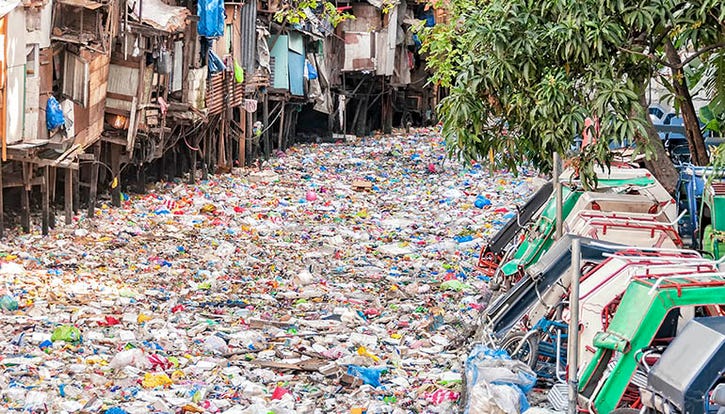
“I think there is a tremendous opportunity right now for U.S. companies to assist international companies and municipalities with managing their waste streams,” states Biderman. “We can not only help the citizens and governments of those countries, but we can also reduce the amount of plastic flowing into the waterways, lessen greenhouse gases and have an overall positive impact across the globe.”
According to Robin Wiener, president of the Institute of Scrap Recycling Industries, Inc. (ISRI), one of the biggest confusions about these ongoing challenges is the causes. She says that recycling is very much a solution for marine litter and plastic waste, but you have to have proper collection and disposal methods for recycling to actually work.
When it comes to reducing emissions, Bryan Staley, CEO and president of the Environmental Research and Education Foundation (EREF), believes there’s a possible leadership role the waste and recycling industry can play to help other industries and areas reduce truck emissions, landfill emissions, methane emissions and other types of emissions.
“If you can measure it, then you can control it,” states Staley. “There has been a lot of research done that can help us understand how emissions in the waste field could be part of climate change and how we can do our part to lessen that impact. By using science to understand some of these issues, we can come up with effective and efficient solutions.”

Industry Ramps Up Focus on Medical Waste
In 2018, the industry increased its focus on the proper collection and disposal of unused pharmaceuticals, as traces of pharmaceuticals in the water supply and diversion of unused pharmaceuticals continued to be broad-reaching societal concerns.
Stericycle, one of the companies helping lead the industry’s medical waste collection and disposal efforts, continued expansion of its portfolio of products and services for safe and compliant pharmaceutical disposal. Its Seal&Send consumer envelope, pharmaceutical disposal kiosk and CsRx product for controlled substances, for example, continued to serve an important role in removing unused medicines from the many different points of generation.
Putting its services and medical waste knowledge to good use, Stericycle served as the exclusive medication disposal partner for the National Safety Council’s “Stop Everyday Killers” national education campaign. The campaign and its traveling memorial, which visited seven cities across the country, illustrated the faces behind the opioid epidemic, provided education on the scope of the problem and promoted solutions to address the crisis. All visitors of the memorial received one of Stericycle’s Seal&Send envelopes to dispose of unused pharmaceuticals found in their own medicine cabinets.
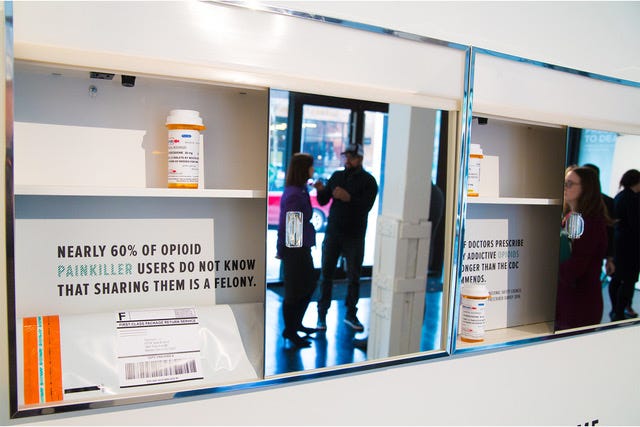
2018 saw an increase in the volume of stops, containers and pounds, as the aging population continued to drive healthcare needs. And, like others in the waste industry, rising costs was an area of focus for medical waste management providers, according to Cindy Miller, president and COO of Stericycle.
“Inflation pressures have forced companies to focus on their own efficiencies and recovering costs,” adds Miller. “Additionally, wage increases and the national truck driver shortage are forcing businesses to think and act differently about employee engagement and recruiting. At Stericycle, we’ve embraced these challenges as opportunity. With a spirit of continuous improvement, our team has a relentless focus on controlling our expenses, identifying inefficiencies and taking steps to improve productivity. Additionally, we’re getting more creative than ever before in engaging our team members. We’re looking at technology and fleet improvements to make it easier for our drivers; we’ve expanded the number of roles for work-from-home arrangements; we are casting a wider net in our search for new talent; we’ve made it easier to apply for jobs with Stericycle; and we are communicating with our team members more than ever before. As a result, our turnover has remained stable despite the tightening labor market and driver shortage.”
In addition to its medical waste and operational milestones, the company had a strong year with its secure document destruction line, Shred-it.
“Data privacy regulations abroad and data breaches in the U.S. continue to drive businesses to outsource their document destruction for more secure management of these materials,” says Miller. “The influence of prices of shredded paper for recycling provided added growth, but demand from customers remains strong despite less paper being used in offices across America.”
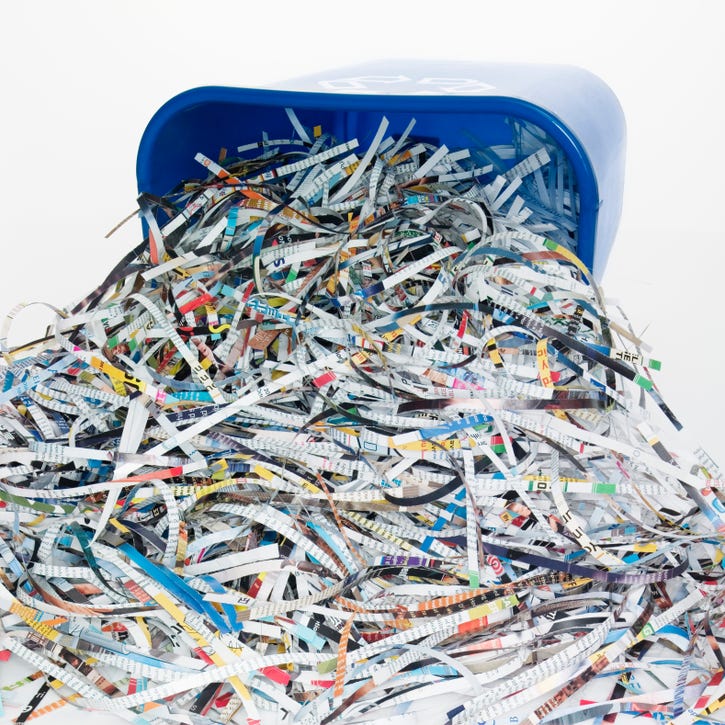
While Stericycle experienced a number of milestones in 2018, it also underwent a business transformation, laying off 335 employees. In 2019, the company will focus on building the future state of the company, streamlining processes and modernizing technology in order to make it easier for its team members to better serve customers.
“Our teams will be implementing new workflows, consolidating systems, evaluating future technologies and building out the new enterprise resource planning system that will become the backbone of Stericycle’s business systems,” explains Miller. “It’s going to be a lot of work, but we’ve got a talented team that is committed and excited about Stericycle’s future.”
With the recent release of the Environmental Protection Agency (EPA) Final Rule on Pharmaceutical Waste Regulations, which goes into effect in six months after publications in the Federal Register, updating procedures for managing pharmaceutical waste—specifically hazardous pharmaceutical waste—will be a new undertaking for the healthcare community. Guidelines under the new rule will make hazardous waste management easier since the final rule excludes hazardous pharmaceuticals from counting toward generator status, excludes residues and wrappers, provides more flexible storage requirements, among other things. Stericycle says it will be working with its healthcare customers in 2019 to help them understand the changes and adjust their procedures based on the updated regulations.
“We also believe that Category A waste will become a topic of focus in 2019. With the outbreak of the deadly Ebola virus in the Congo during August and more than 300 suspected deaths, public health authorities around the world have refocused on the disease,” states Miller. “We anticipate U.S. government agencies will be working cross functionally to revisit our regulations regarding the packaging, transport and treatment of Ebola and other Category A waste in order to bolster measures that protect the public should cases again appear in the U.S.”
Industry Associations Boast Positive Growth
Four of the leading industry associations, the National Waste & Recycling Association (NWRA), SWANA, ISRI and EREF reported milestones and positive growth in 2018.
2018 was a year of transformation for NWRA, as it marked the association’s first full year under the direction of Smith. Throughout the year, NWRA changed its mission to be of greater service to its members, achieved a balanced budget for the first time in many years, hired a range of new staff members, among other achievements.
“The organization is undergoing a dramatic transformation into an advocacy-focused operation in which 80 percent of the effort is advocacy and 20 percent is everything else,” states Smith. “Notable achievements for the year include the formation of the Political Action Committee (PAC) and the Organizations for Supply Chain Recycling (OSCR) coalition, a significant increase in contact hours before national, state and local legislators and regulatory officials, record media coverage, record WasteExpo educational session attendance, record passage of Slow Down to Get Around legislation in six states, significant regulatory victories such as the electronic logging device (ELD) exemption from the Federal Motor Carrier Safety Administration (FMCSA) for Waste Management and likely the entire industry, a spotless accounting audit, solidification of relationships with state waste organizations and the formation of new chapters.”
From a government relations perspective, NWRA made a significant push into the federal affairs arena in 2018 with the hiring of a dedicated, full-time federal lobbyist. The association developed and released a formal Federal Legislative and Regulatory Agenda covering three dozen separate issues in eight policy areas; implemented a new grassroots and grasstops program for industry members to make their voices heard with their elected officials, including a “How to Host Your Lawmaker” manual for facility tours; launched a new PAC; and founded the OSCR coalition to bring together diverse industries with common interests to address shared priorities, opportunities and threats.
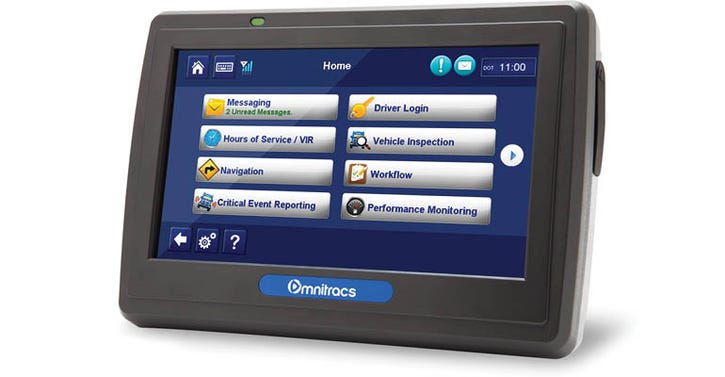
NWRA also worked with members of Congress to put together a letter from U.S. Representatives to the U.S. Trade Representative and Secretary of Commerce urging them to make China’s ban on recyclables a priority in their trade negotiations with China. In addition to filing supportive comments with agencies such as the FMCSA and National Labor Relations Board on behalf of the waste and recycling industry in pending rulemaking procedures, NWRA filed a petition with FMCSA requesting an industrywide exemption for the waste and recycling industry from the ELDs mandate as it relates to Hours of Service compliance.
From a safety perspective, NWRA strengthened its commitment to safety in 2018 by hiring Kirk Sander as its new vice president of safety and standards.
“To improve safety in the industry, NWRA realizes that we need to find the big wins to make our industry safer and need to work across the commercial motor vehicle community,” says Smith. “NWRA has joined the Road to Zero Coalition, Federal Motor Carrier Safety Administration’s Our Roads, Our Safety coalition and continued our membership with the Commercial Vehicle Safety Association. We have launched monthly safety webinars to help our members understand various issues and will continue our Safety Monday safety talks. The NWRA Safety Committee fall meeting featured a cross representation of organizations, including the National Safety Council, AAA, Tow Truck Operators, ISRI and Canadian Association of Recycling Industries, to mitigate distracted driving, and we look forward to continuing our work in 2019.”
In 2019, NWRA will focus on four main areas: distracted driving, per- and polyfluoroalkyl substances (PFAS), the disposal of lithium-ion batteries and recyclables without an end market.
NWRA will also remain focused on developing a strong association platform that allows its staff to achieve legislative and regulatory victories on behalf of the industry. Its 30-some positions will be the framework for its continued efforts throughout 2019 and beyond.
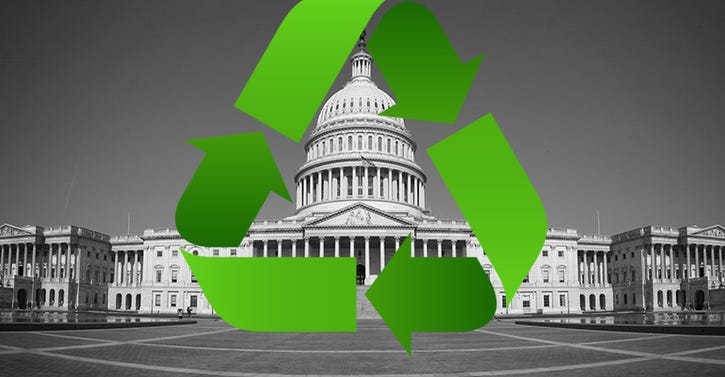
“We will continue to evaluate the implementation of strategies and deployment of resources so that we are functioning in a manner that provides exceptional return on member investments in their association,” comments Smith. “In 2019, we will likely deploy a fourth regional director to help with our ground game in the states and municipalities where the rules and regulations are made that have the most effect on the industry. We will continue growing our Political Action Committee so that we can solidify relationships among federal lawmakers. We have renewed our WasteExpo contract with Informa for another three years, and we are committed to growing WasteExpo, the predominant conference in the industry. In 2019 at WasteExpo, we are running a Safety Symposium to be chaired by the former head of the Occupational Safety and Health Administration (OSHA), Dr. David Michaels. We are lining up a slate of nationally known speakers for this event and for all educational events at WasteExpo. I will also be interviewing Richard Burke, CEO of Advanced Disposal, at a fireside chat.”
When it comes to government relations efforts for 2019, NWRA has updated its Federal Legislative and Regulatory Agenda to address policy successes from 2018 as well as shift emphasis to match the priorities of the incoming 116th Congress. Additional Policy Position Papers going into greater detail of the issues contained in the agenda are in various stages of development. This is being done in anticipation of even more Capitol Hill activity in the new year, as NWRA seeks to incorporate greater domestic recycling capacity and incentives for states to adopt Slow Down to Get Around laws as elements of the much-anticipated large-scale infrastructure legislation. In September, NWRA will host its Executive Leadership Round Table conference in Washington, D.C., in an effort to build stronger connections between the industry and elected officials.
Also in 2019, NWRA will continue its commitment to safety. The association will work with its members and coalition partners to find big wins to make the industry safer. The NWRA safety committee is looking to play a more active role in the industry, specifically in the combating distractive driving. The association will continue to monitor the progression of automated vehicles as they become more integrated in the modal environment, and it will work toward finding ways to keep the industry’s drivers in the truck with the utilization of automatic pickup to the potential integration of vehicle-to-vehicle and vehicle-to-infrastructure systems. NWRA is also looking forward to working with OSHA in 2019 and signing a formal alliance with OSHA.
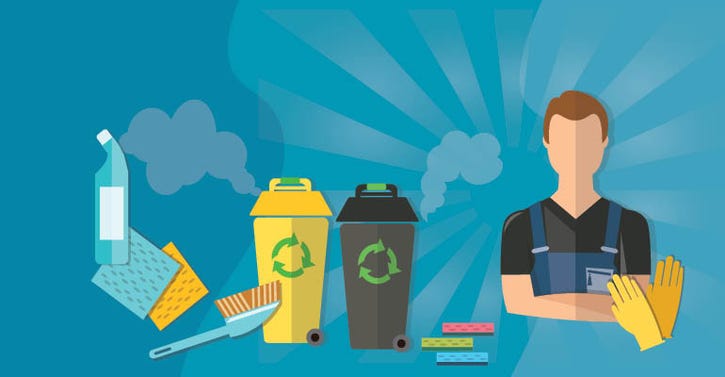
SWANA also made strong moves in 2018 by surpassing 10,000 members and releasing a Hauler Safety Toolkit that features valuable safety resources in a simple, shareable form. In addition, the association participated and helped shape the EPA's America Recycles Day Summit.
“For SWANA, the highlight of 2018 was passing the 10,000-member threshold. SWANA is the largest waste association in the U.S. and Canada and has grown by nearly 25 percent in less than four years,” says Biderman. “This rapid growth has its roots in our Strategic Plan and has been sparked by our leadership on China/recycling issues and our expanded efforts to improve the industry’s safety record. However, one of my great disappointments of 2018 has been the notable increase in worker fatalities that we have recorded this year compared to 2017. Nothing we do at SWANA is more important than getting waste collection workers off the list of the 10 most dangerous occupations, and we will continue to provide programs, resources and training to everyone and anyone in the industry to accomplish that goal. I invite companies and local governments to help us do so.”
“While I predict that additional states will enact Slow Down to Get Around laws in 2019, these laws are not sufficient to get the industry off the top 10 list,” adds Biderman.
In 2019, SWANA plans to launch a national rollout of its Hauler Safety Toolkit in both the U.S. and Canada, and it will host a follow-up meeting related to the EPA’s America Recycles Day Summit in Boston in February in connection with SWANApalooza.
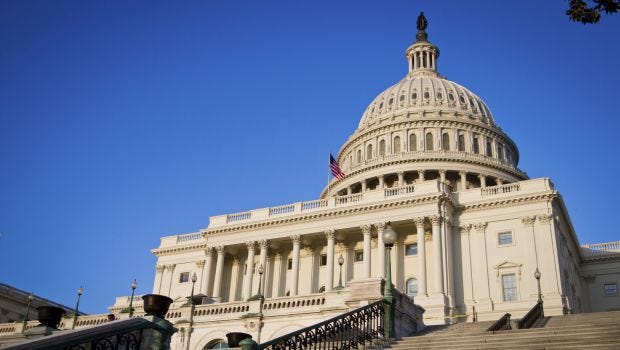
03_09 Congress regulatory government crop
ISRI also had a positive year, with its annual convention drawing more than 5,000 global attendees and its ample amount of work completed on the Hill and around the world to represent the industry and to educate policymakers on a number of industry challenges and needs.
“In 2018, we also held our first-ever MRF Summit in partnership with SWANA that brought together recyclers, brand owners, materials recycling facility (MRF) operators and other stakeholders to discuss challenges and opportunities within the industry,” says Wiener. “In addition, we started a group made up of about 14 different associations that meets regularly and discusses how we can work together to improve the residential recycling stream.”
ISRI also joined the EPA in signing on to the National Vehicle Mercury Switch Recovery Program to help improve recycling and reduce mercury air emissions.
In 2019, ISRI will host its annual convention in Los Angeles in April, which will include a number of new focuses like workforce development and training and residential recycling. In addition, ISRI will focus on market development to improve members’ access to both domestic and international markets, education and outreach in countries around the world and advocacy.
“We have a trade mission planned in Asia for 2019, where we hope to open up more markets for our members,” states Wiener. “We will also be working more closely with brand owners, consumers and other industry associations to build and increase demand for recyclables in the manufacturing sector. Lastly, we will release our advocacy agenda in early 2019, which will likely focus on infrastructure development, clarifying who recyclers really are and explaining the difference between waste management and materials management because those are all things that are becoming priority issues at state, local and federal levels.”

EREF also reached many milestones in 2018, including being awarded a four-star rating from Charity Navigator (the highest achievable status) and the Silver Seal of Transparency from GuideStar. Other milestones include reaching record or near-record amounts for research grants and scholarships spending; hitting record-setting levels for its Annual Charitable Auction, Fall Classic & Networking Event, Elevated Temperature Landfill Workshop and 2018 Global Waste Management Symposium; launching the EREF Municipal Solid Waste eTextbook that was used by students during the fall 2018 semester; being recognized as one of the primary sources of data on how much waste is managed in the U.S.; being cited as a key reference in EPA’s Greenhouse Gas Inventory Waste Chapter; seeing an increase in total donors and donor retention; and seeing an increase in internal research report downloads.
In 2019, EREF has a lot in the works, especially since it’s turning 25! The foundation will celebrate its 25 years of existence in various ways throughout the year, and it will produce at least four internal research reports.
At WasteExpo 2019, EREF will work hand-in-hand with the Waste360 and WasteExpo staff to host a recycling workshop. In addition, EREF will host an organics summit in California in July and a summit on leachate that will most likely be held in August.
EREF is also evaluating more than 300 submissions for a recycling research request for proposals (RFP) that it released in 2018 and planning to likely release an RFP for PFAS research on leachate in late 2019.
“One of the projects I am most excited about is a new program called Designed for Discard, which aims to influence human behavior and reduce contamination,” says Staley. “The program will look at all end points and provide a scientific basis on why one thing should go in one bin versus another. We will be ramping that program up for 2019.”
Also in 2019, EREF will expand upon its Internship in Excellence program and various scholarship programs.

2019 Predictions
As we enter 2019, experts predict that the waste and recycling industry will be faced with a number of challenges and opportunities, per usual.
“Exiting 2018, the outlook for 2019 is more price to fully absorb internal inflation, stable underlying volumes and a deal environment as strong as 2018—maybe better,” states Michael E. Hoffman of Stifel. “Solid waste views the U.S. economy as healthy and resilient with an engaged customer, and it sees no pockets of weakness.”
Hoffman estimates that the 2019 core solid waste organic growth should be 4 percent to 6 percent, deals could add another 1 percent to 3 percent and revenue recognition will remain as a boost to margins, but recycling should be less or maybe even no drag at all.
“The FY19 outlook for price and volume should range between 2.5 percent and 4.2 percent for price, and (0.5 percent) and 1.8 percent for volume,” adds Hoffman. “Deal rollover adds another 1 percent to 7.5 percent, and fees are negligible as fuel is currently up 0.7 percent against a 2018 average. Recycling starts 2019 with a slight drag on sales but should be at least neutral, if not additive, to profits for all of FY19. All combined topline growth should range between 3.5 percent and 9.9 percent, and margins in FY19 should be flat to up.”
About the Author
You May Also Like




